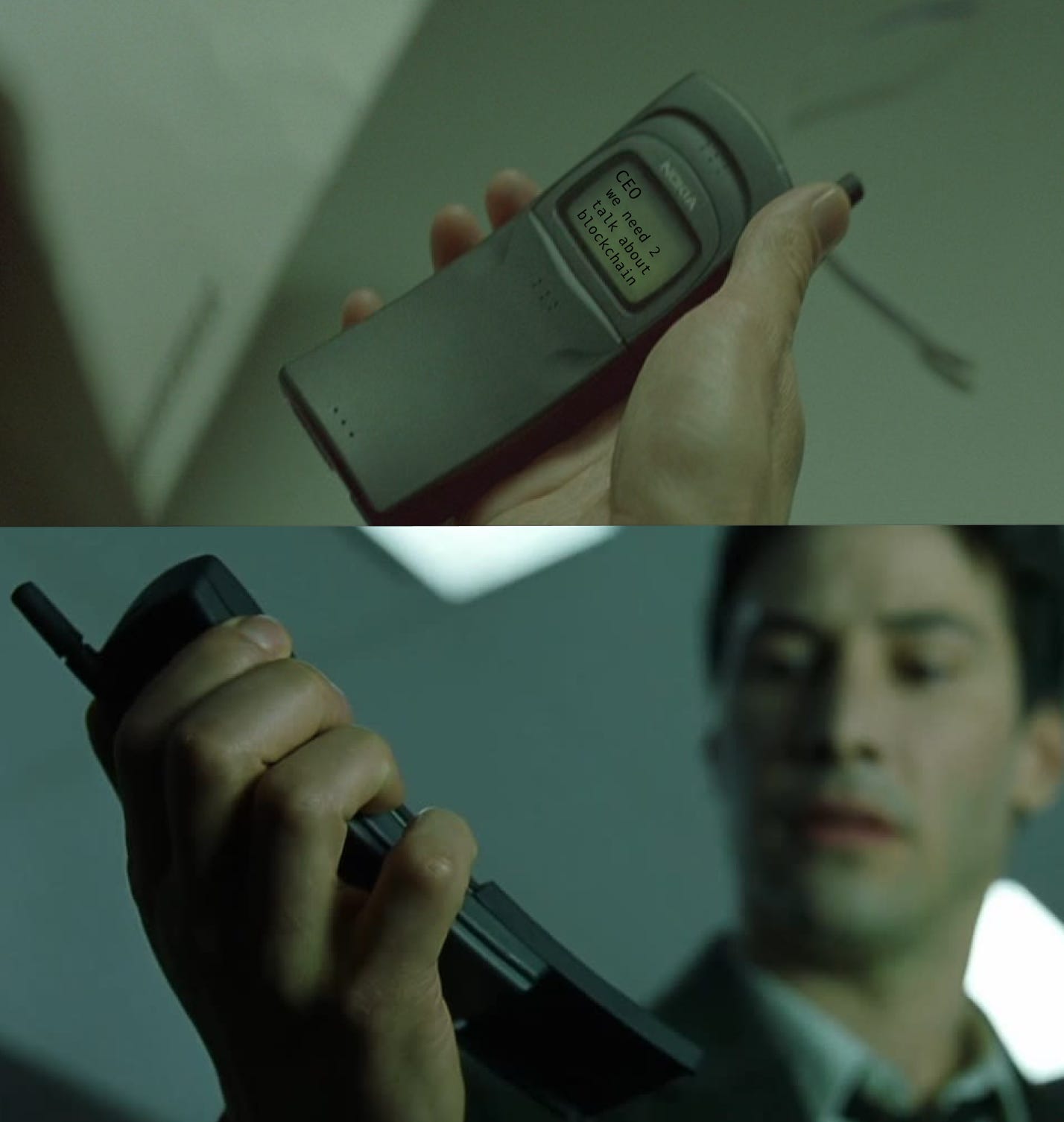One CEOs Wave is Another CPOs Tsunami
You know that feeling when you get that text from your CEO asking if we’re using some specific, very new, very hyped technology? We’re going to discuss that.
For product and engineering leaders at established companies, innovation isn’t a luxury—it’s a necessity. You’ve built a well-tuned machine where the CEO and senior leadership set the strategic vision, middle management refines that into actionable plans, and cross-functional teams execute with precision. But when a disruptive technology like generative AI or blockchain makes headlines, even the best-oiled process can feel the shock.
The Established Innovation Assembly Line
In established companies, the innovation process is much like an assembly line. At the top, the CEO and executive team provide the overarching strategic direction. Middle managers then interpret this vision, creating roadmaps that are deeply rooted in customer insights and market realities. Finally, dedicated product and engineering teams work to deliver solutions that meet both business objectives and user needs.
This isn’t new. Christensen and Overdorf made the case that structured innovation pipelines not only drive sustainable growth but also help prevent the pitfalls of reactive decision-making in their 2000 article in HBS. By relying on collective expertise rather than a single visionary impulse, companies can avoid the all-too-common trap of chasing the latest tech trend without a clear problem to solve.
When Disruptive Tech Disrupts the Process
Even the most robust processes can be challenged when a high-visibility technology emerges. Suddenly, you might find an urgent message from the CEO about the “next big thing” in tech. While the idea of leveraging breakthrough innovations is exciting, there’s a real risk that such directives can overshadow the foundational focus on user needs.
The CEO’s Sway and the User-Centric Dilemma
When CEOs grab the wheel to steer the company toward the latest tech marvel, it can derail a process that’s been carefully honed over years. Product leaders are then caught between the lure of technological advancement and the imperative to remain user-centric. Rich Mironov, in his insightful article Difficult Product Discussions with CEOs, explains that such top-down priorities can overload tech teams, pushing them away from data-backed, customer-first strategies.
Similarly, Mews Developers have pointed out that technology-first initiatives often produce solutions that are impressive in theory but disconnected from real user problems. This misalignment not only risks product quality but can also lead to missed opportunities to build genuine customer value.
Embracing Creative Destruction
Innovation in any established company comes with a dose of creative destruction—the process where groundbreaking innovations render older models obsolete. Think of it like watching a familiar city skyline change as new skyscrapers rise and older buildings gradually disappear. This transformation is bittersweet. While new technologies can revolutionize your business, they also require letting go of legacy systems—and in some cases processes—that once worked well.
But as with all change, it carries inherent risk. As product and engineering leaders, how do we mitigate that risk?
Building Future Readiness: Agility and Strategic Foresight
Waiting until disruption forces your hand can be costly. Instead, build resilience and agility into your processes. Here are some actionable strategies:
Foster a Learning Culture: Regular workshops, online courses, and knowledge-sharing sessions help keep your teams up-to-date and ready for change.
Encourage Experimentation (and participation): Set aside resources and time to test emerging technologies. A “fail fast, learn quicker” mentality isn’t about recklessness—it’s about smart experimentation that can reveal new opportunities without derailing your core mission. And critically, don’t just create one team that gets to play with all the fun tech. Spread the love and let everyone in on the fun.
Maintain Open Communication: Ensure that all levels of your organization are aligned. When everyone understands both the strategic vision and the importance of user feedback, you’re better prepared to integrate disruptive innovations without losing focus.
Invest in Flexible Infrastructure: Just as you wouldn’t build a house on sand, make sure your digital and operational infrastructures are robust, scalable, and adaptable to change.
All Things in Balance
The challenge for product and engineering leaders is to strike a balance between honoring established processes and being agile enough to embrace the next wave of innovation. The goal isn’t to reject disruptive technology outright but to integrate it thoughtfully—ensuring that user needs remain at the core of every decision.
To summarize:
Stay User-Centric: Keep your product development rooted in real customer needs, even when new tech is on the horizon.
Embrace Creative Destruction: Understand that letting go of the old can make way for groundbreaking innovations.
Prepare for the Unexpected: Build a resilient culture that is agile, continuously learning, and open to smart risks and strategic foresight.
By doing so, you transform disruptive challenges into opportunities for competitive advantage, ensuring that your innovation assembly line remains both efficient and responsive in a rapidly evolving tech landscape.
I want to hear from you! How has the AI hype impacted you? Have you had to deal with an AI-powered fire drill? I’d love to hear about it!





